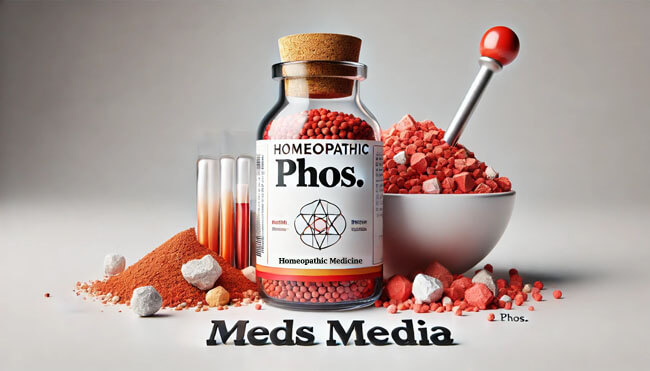Sepia, a remedy derived from the inky secretion of the cuttlefish, holds a significant place in homeopathy due to its potent effects, especially on women. It is primarily known for its action on the venous system, leading to symptoms such as weakness, a yellow complexion, and a distinct “bearing-down” sensation in the lower abdomen. This remedy works deeply on the emotional, psychological, and physical aspects of an individual, offering relief to those whose symptoms align with its profile.
In this guide, we will explore the Sepia personality in homeopathy, diving into its mental, emotional, and physical characteristics, behavioral patterns, associated diseases, and miasmatic traits, all based on the principles outlined in homeopathic Materia Medica.
Sepia Personality Overview
Sepia is typically associated with individuals, often women, who experience stagnation, both emotionally and physically. This stagnation can manifest as feelings of exhaustion, indifference, and a lack of motivation. People needing Sepia often feel overwhelmed, burdened by responsibilities, and emotionally disconnected, even from loved ones.
Mental and Emotional Characteristics
The mental and emotional state of a person needing Sepia is one of indifference and detachment. Sepia patients often feel emotionally exhausted and apathetic, especially towards family and close relationships. They may be:
- Indifferent to family members, feeling distant or disconnected from those they love the most.
- Irritable and easily offended, with a tendency to become overwhelmed by daily life and responsibilities.
- Anxious, particularly in the evening, sometimes experiencing a sense of dread or hopelessness.
- Sad and depressed, often crying when trying to explain their symptoms.
- Miserly or overly frugal, showing reluctance to part with their resources.
- Averse to occupation, displaying a strong disinterest in work or any form of activity.
- Afraid of being alone, but at the same time finding the presence of others overwhelming.
In women, these emotional traits are often linked to hormonal imbalances, particularly those associated with menstrual cycles or menopause. The overwhelming feeling is one of weariness, as if life has become too much to bear.
Physical Characteristics
Sepia patients often have a distinct yellow complexion, appearing pale or sallow, particularly around the mouth and nose. They experience physical weakness and a variety of symptoms connected to the venous system. Some of the most common physical traits include:
- Bearing-down sensation in the lower abdomen, particularly in women, as though everything might fall out of the pelvic region.
- Prolapse of the uterus and vagina, with feelings of relaxation and heaviness in the pelvic organs.
- Chilliness, even in warm environments, with a tendency to feel cold easily.
- Hot flashes during menopause, often accompanied by weakness and profuse perspiration.
- Frequent headaches, especially with throbbing pain in the back of the head (cerebellum).
- Flatulent dyspepsia (indigestion with gas), often worse after eating, particularly after consuming milk or fatty foods.
- Stomach discomfort, including nausea at the sight or smell of food, and a gnawing sensation that is not relieved by eating.
- Tendency to faint or feel lightheaded easily.
Women who match the Sepia profile often report that their symptoms worsen during menstruation or menopause, and they may experience intense physical discomfort before and during their periods.
Behavioral Patterns
Sepia individuals tend to withdraw from social interaction, displaying a disinterest in engaging with others. They may isolate themselves, feeling a profound lack of energy or motivation to participate in family life or work.
- Avoidance of social situations and household duties, even though they once may have enjoyed these responsibilities.
- Tendency to weep when recounting their symptoms, reflecting their deep sense of sadness and emotional turmoil.
- Disinterest in physical contact, even with loved ones, which can lead to tension in personal relationships.
- Unexplained irritability, which can flare up suddenly, often in response to minor frustrations.
- Indifference to previously cherished activities; they feel no joy in things they once loved.
Associated Diseases
Sepia is often prescribed for individuals suffering from chronic, systemic health issues, particularly those related to the hormonal and venous systems. Some of the common conditions treated with Sepia include:
- Uterine prolapse and vaginal prolapse, where the pelvic organs have weakened and dropped from their normal positions.
- Menstrual disorders, including irregular or painful menstruation, and hot flashes during menopause.
- Chronic constipation, with a sensation of a ball or mass in the rectum, and difficulty passing stool.
- Liver disorders, particularly with venous congestion, which may manifest as brown spots on the skin or a yellow complexion.
- Chronic indigestion and gastric disorders, especially in individuals who experience nausea at the sight of food or after eating.
- Urinary issues, such as chronic cystitis, slow or painful urination, and the presence of red, sandy sediment in the urine.
Miasmatic Personality of Sepia
In homeopathy, the miasmatic background refers to the inherited predispositions to certain diseases. Sepia is considered to align with sycotic and tubercular miasms:
- Sycotic miasm: Characterized by tendencies towards stagnation and overgrowth. This explains the chronic, lingering nature of symptoms like uterine prolapse, nasal catarrh, and skin conditions like chloasma and rosacea.
- Tubercular miasm: Represents a weary, exhausted state, often seen in Sepia individuals who suffer from chronic respiratory issues, frequent colds, or whooping cough, in combination with fatigue and weakness.
These miasms highlight the deep-rooted, chronic nature of the ailments that Sepia addresses, often requiring long-term, constitutional treatment for full resolution.
Conclusion
Sepia is a powerful homeopathic remedy, particularly effective for women experiencing physical and emotional stagnation. With its wide-reaching effects on the hormonal, venous, and digestive systems, Sepia provides relief to those who feel emotionally disconnected, physically exhausted, and overwhelmed by life’s responsibilities. Its profound impact on the uterine system, combined with its miasmatic roots, makes Sepia an invaluable remedy in the treatment of chronic, deep-seated conditions.
Similar Posts
Zincum Picricum Homeopathic Medicine & Personality | Uses, Benefits & Indications
Zincum Phosphoricum Homeopathic Medicine & Personality | Uses, Benefits & Indications
Zincum Iodatum Homeopathic Medicine & Personality | Uses, Benefits & Indications
Zincum Bromatum Homeopathic Medicine & Personality | Uses, Benefits & Indications
Zea Homeopathic Medicine & Personality | Uses, Benefits & Indications
Zincum Aceticum Homeopathic Medicine & Personality | Uses, Benefits & Indications
Zincum Cyanatum Homeopathic Medicine & Personality | Uses, Benefits & Indications
Zincum Muriaticum Homeopathic Medicine & Personality | Uses, Benefits & Indications
Zincum Oxydatum Homeopathic Medicine & Personality | Uses, Benefits & Indications
Zincum Sulphuricum Homeopathic Medicine & Personality | Uses, Benefits & Indications

Phosphorus Homeopathic Medicine & Personality | Uses, Benefits & Indications
Causticum Homeopathic Medicine & Personality | Uses, Benefits & Indications

Blood Clot in Eyes: Symptoms, Homeopathic Treatment & Prevention

Veratrum Viride Homeopathic Medicine & Personality | Uses, Benefits & Indications


